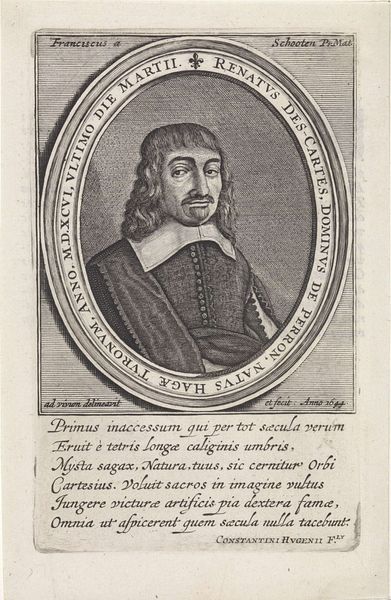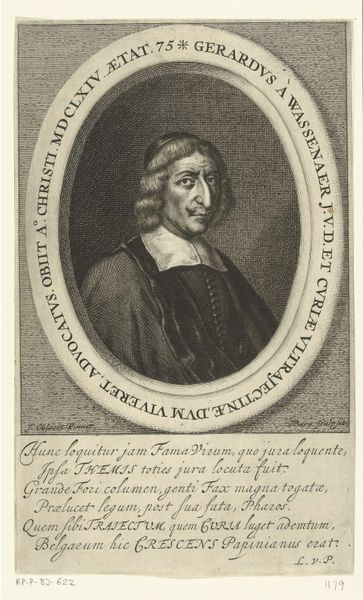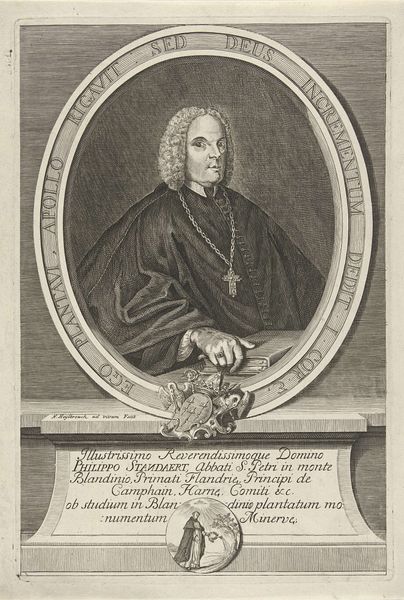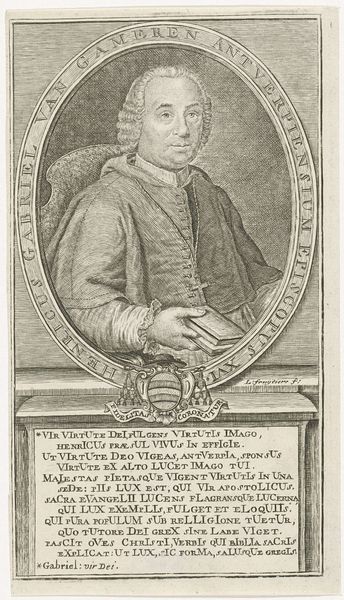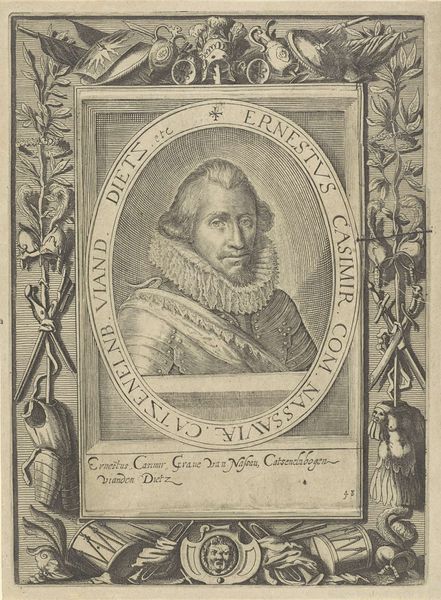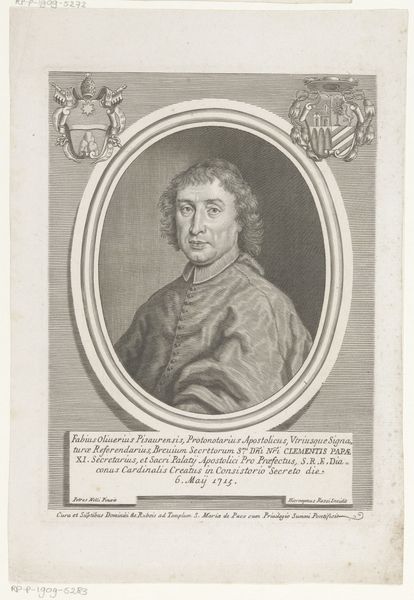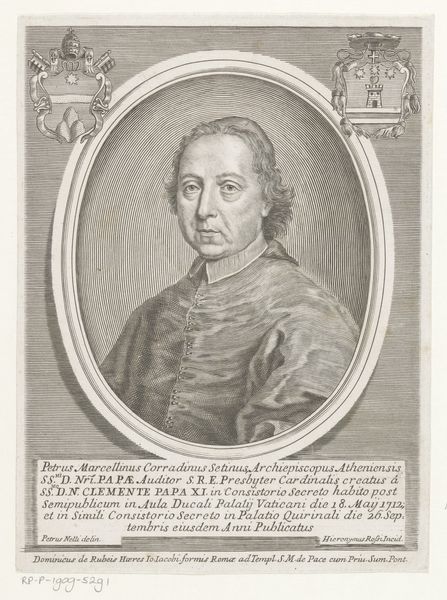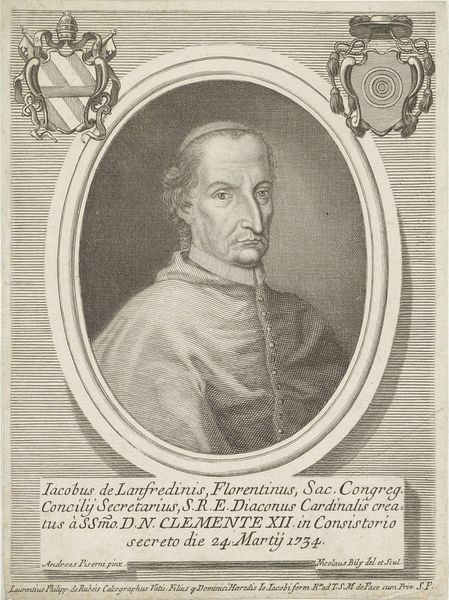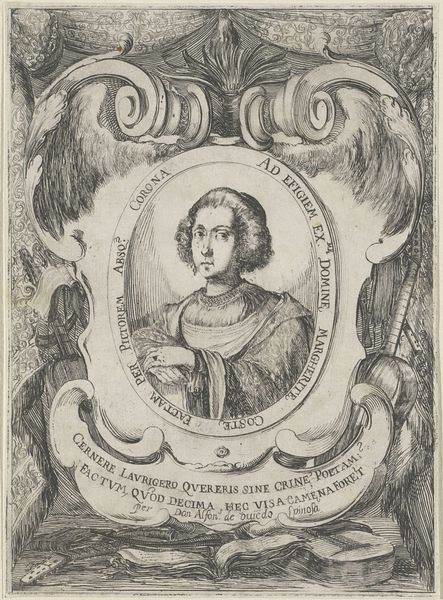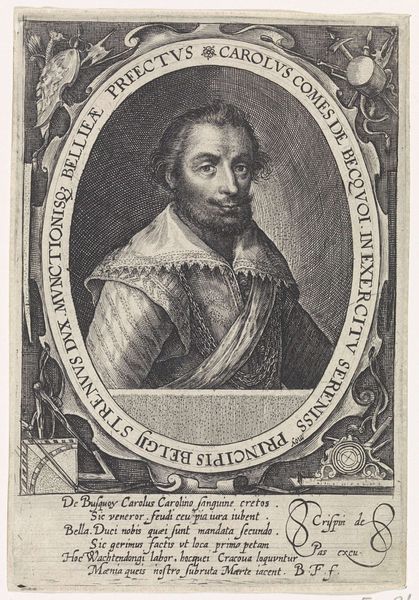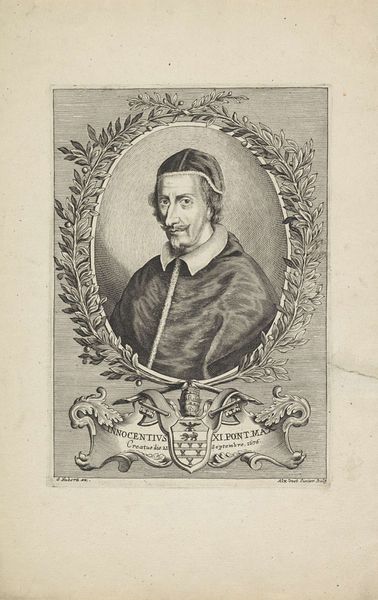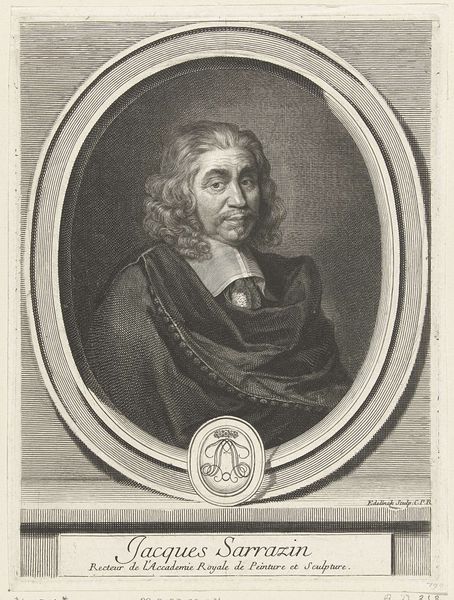
graphic-art, print, paper, engraving
#
portrait
#
graphic-art
#
aged paper
#
toned paper
#
baroque
# print
#
old engraving style
#
paper
#
19th century
#
engraving
Dimensions: height 175 mm, width 120 mm
Copyright: Rijks Museum: Open Domain
Curator: The somber tonality of this engraving initially strikes me. It’s a fine example of Baroque portraiture, capturing the likeness of Gregorio Messere around 1700. What's your take on it? Editor: I immediately notice the labor invested here—look at the textures and the meticulous detail achieved through engraving, and its inevitable reproduction. This wasn't just about representing an individual, but also about circulating an image within a specific social network. The availability of the technology shaped its existence. Curator: Certainly, the means of production are notable, yet I’m drawn to the composition. The oval frame, adorned with botanicals and ribbons, elegantly contains the sitter, and contributes to the portrait’s overall balance and symmetry. Do you find meaning in those specific details framing the portrait? Editor: Absolutely. Consider the material constraints: the engraver worked with set tools, each cut a conscious act and mark of labor. Each one plays into the semiotic weight it holds in the broader market and network of engravers and their clients. The "value" of those plants and ribbons becomes very different when seen in the lens of what the work meant in a system, beyond the intention or vision of a patron or artist. Curator: A compelling point. Let's consider the subject's attire and expression. There's a certain severity to his gaze, a quiet intensity that I think captures the spirit of the Baroque era—its blend of realism and idealism. Editor: But what’s being idealized here? Consider how prints like these legitimized social status, bolstered specific power dynamics. Who could afford them? Whose image was being disseminated, and how? The material access, its cost, is as informative as the sharp gaze of Mr. Messere himself. Curator: It’s fascinating to consider this artwork through both lenses. The formal elements contribute to our aesthetic experience, while the social and economic context broadens our comprehension of the piece's meaning and circulation. Editor: Exactly. Appreciating both facets offers a much richer understanding, even in this small graphic work, and reveals some surprising realities behind its original commissioning and construction.
Comments
No comments
Be the first to comment and join the conversation on the ultimate creative platform.
